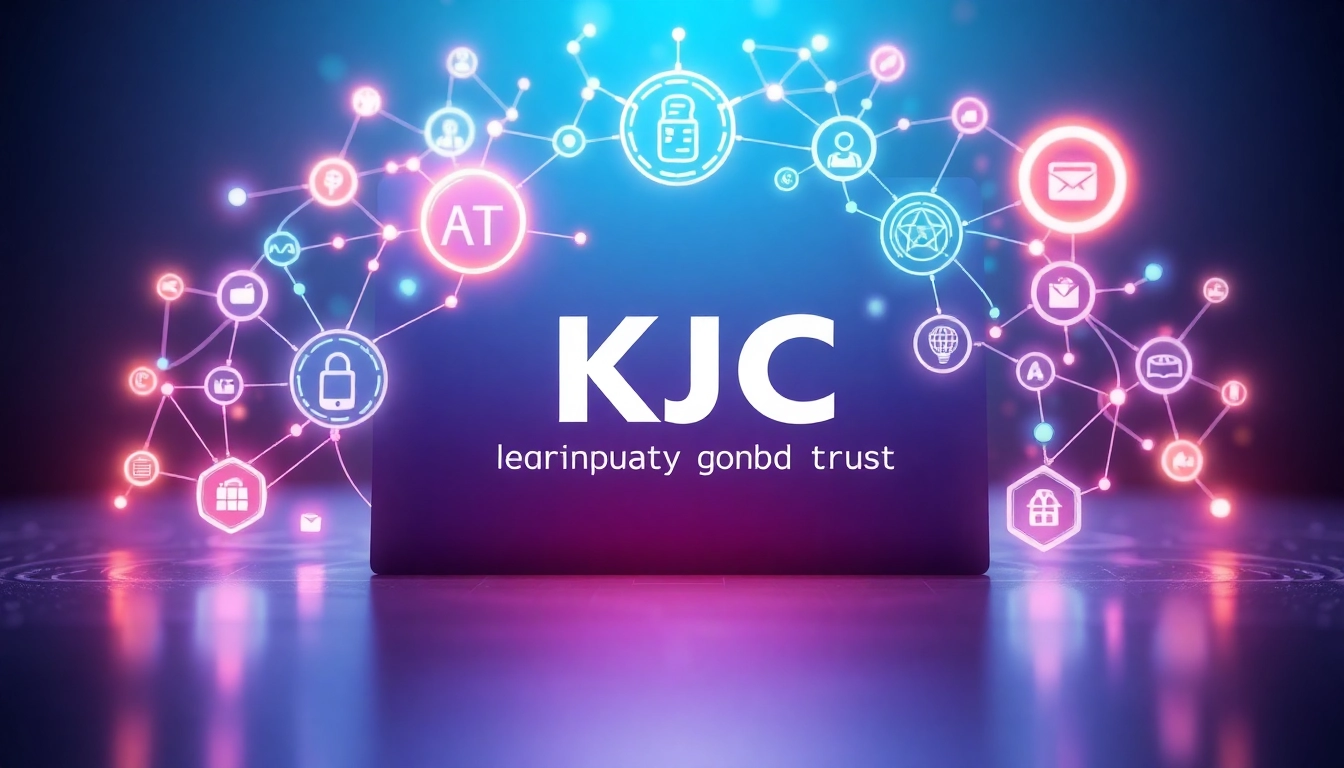In the rapidly evolving blockchain landscape, TRON has established itself as a leading platform for decentralized applications, digital asset transactions, and smart contract execution. Central to TRON’s ecosystem is tron energy, a vital resource that fuels network operations and enhances scalability. As the demand for efficient, secure, and affordable energy solutions grows, understanding how to access and optimize tron energy becomes imperative for developers, investors, and blockchain enthusiasts alike. This comprehensive guide explores the fundamentals of tron energy, the various methods to acquire and manage it, and how platforms like CatFee.IO are revolutionizing energy rental and purchasing, providing users with unparalleled flexibility and security. Dive into this in-depth analysis to unlock the full potential of tron energy and elevate your blockchain participation.
Understanding tron energy: Fundamentals and Uses
What is tron energy and how does it power blockchain functions?
At its core, tron energy is a specialized resource within the TRON blockchain ecosystem that acts as the fuel for executing smart contracts, deploying decentralized applications (dApps), and facilitating complex transactions. Unlike TRX (the native token), which is primarily used for transfers and staking, tron energy is consumed during computational operations, making it essential for ensuring the efficiency and security of the network. When users deploy smart contracts or perform high-computation transactions, such as minting NFTs or interacting with DeFi protocols, tron energy is consumed proportionally to the complexity of the task. This mechanism prevents network abuse by limiting the volume of computational activity per user, fostering a sustainable and scalable environment.
In practical terms, tron energy enables seamless transactions by offloading the computational workload from the blockchain itself. It acts as an internal resource that, when depleted, requires users to acquire or generate more tron energy to continue their activities. This process ensures network stability, reduces transaction costs, and maintains DRAM and storage constraints in blockchain nodes. For developers, efficient management of tron energy translates into optimized contract execution, lower gas fees, and enhanced user experience.
Differences between tron energy and bandwidth: Key distinctions
While both tron energy and bandwidth are resources essential to the TRON ecosystem, they serve different roles and are consumed under different conditions:
- Tron Energy: Primarily used for executing smart contracts, deploying dApps, and processing complex transactions. It is consumed during the execution phase of transactions involving code, such as creating tokens, executing DeFi strategies, or minting NFTs.
- Bandwidth: Mainly utilized for simple transactions like TRX transfers, voting, and other straightforward operations. Bandwidth points are typically replenished daily and can be increased through freezing TRX or purchasing additional bandwidth.
One key distinction is how each resource is acquired and consumed. Tron bandwidth is largely free, with a daily allotment of points per account, whereas tron energy often requires dedicated rental or staking strategies to ensure enough capacity for complex operations. Understanding these differences allows users to allocate resources efficiently based on their project requirements.
Why tron energy is essential for decentralized applications and smart contracts
Decentralized applications (dApps) and smart contracts rely on tron energy to function correctly. Since these operations often involve complex logic and multiple computational steps, they inherently consume energy. Without sufficient tron energy, executing smart contracts may fail, leading to transaction rejections or delays. Moreover, managing tron energy effectively allows dApp developers to optimize application performance, reduce latency, and improve user satisfaction.
Furthermore, in a competitive blockchain environment, having reliable access to tron energy ensures uninterrupted service delivery and supports scalability. For instance, enterprise-level TRON node services that operate with enterprise-grade energy support, like those provided by CatFee.IO, guarantee high availability and stability, key factors for sustainable dApp operation and user trust. Ultimately, tron energy’s role is integral to maintaining a vibrant, secure, and scalable decentralized ecosystem.
Methods to acquire tron energy efficiently
Buying tron energy directly via trusted platforms
The most straightforward method for acquiring tron energy is purchasing it directly through reputable, officially authorized platforms. Authorized platforms such as CatFee.IO provide secure, transparent, and cost-effective ways to buy, rent, or lease tron energy. These platforms operate independent TRON nodes, ensuring high stability and low latency, critical for efficient energy transactions.
Direct purchase involves selecting a desired energy amount, completing a secure payment—typically in TRX or TRC20-USDT—and receiving the energy instantly. One of the main advantages is verifiability on-chain, which assures users of transaction integrity. Moreover, trusted platforms incorporate advanced security measures, including signature verification and encryption, to protect users’ funds and prevent fraudulent activities.
For institutional or high-volume users, these platforms often offer flexible billing plans, bulk discounts, and API integration, which streamline energy management and support automation. By choosing a reliable provider like CatFee.IO, users benefit from continuous 24/7 support, ensuring that their energy needs are always met without delays or technical hiccups.
Renting or subleasing tron energy: Cost-effective strategies
Energy rental or subleasing has become a popular alternative to direct purchase, particularly for users with fluctuating needs or limited budgets. Platforms like CatFee.IO facilitate energy subleasing, enabling users to earn passive income by leasing their unused tron energy capacity to others. This model democratizes energy access and reduces operational costs significantly.
How does energy subleasing work? Users can invest TRX or TRC20-USDT to rent energy for a specified period. They can then resell that energy to other users at a profit, creating a sustainable micro-economy within the TRON network. For clients, rental services provide a flexible, scalable, and affordable way to access sufficient energy without large upfront investments.
This method also benefits energy providers, company operators, and traders by optimizing resource utilization, increasing liquidity, and enabling rapid scaling of operations. CatFee.IO’s enterprise-grade node infrastructure ensures high availability, even during peak usage, making rental a highly dependable method for maintaining uninterrupted service performance.
Staking TRX to generate energy naturally: Pros and cons
Another prevalent strategy to acquire tron energy is staking or freezing TRX tokens. When TRX is frozen in the network through staking, users earn energy proportionally to their staked amount and duration. This process is straightforward, secure, and reward-oriented, offering a passive way to increase energy reserves while earning staking rewards or dividends.
Advantages of staking include:
- Cost-effectiveness: No need to purchase additional resources; existing tokens are used to generate energy.
- Security: Staking improves network security and aligns user incentives with network health.
- Passive income: Users can earn rewards or interest during the staking period.
However, the main limitations are the immutability of frozen TRX during the staking period and opportunity cost. Excessive locking may reduce liquidity, and unfreezing takes time, which could delay access to funds. Additionally, staking doesn’t directly allow for scalable energy provisioning during sudden surges in network demand.
For optimal results, many users combine staking with rental or direct purchase, balancing cost-efficiency with operational flexibility. Platforms like CatFee.io also support staking options integrated within their ecosystem, enhancing user convenience.
Choosing the right platform for tron energy renting or purchasing
Features to look for: Security, stability, and competitive pricing
Selecting a reliable platform is paramount for maximizing the benefits of tron energy. Critical features include robust security protocols such as advanced encryption, signature mechanisms, and refund policies. Stability is equally vital; platforms operating independent TRON nodes with global deployment—like CatFee.IO—ensure high uptime and low latency, even during traffic spikes.
Competitive pricing is a key factor, particularly when operational costs impact profitability. Leading platforms offer flexible billing models, transparent fee structures, and volume discounts, enabling users to tailor solutions to their needs. Consistent on-chain verifiability and regulatory compliance are additional advantages that foster trust and transparency.
How self-built node services enhance energy reliability
One of the strategic advancements in energy provisioning is deploying self-built TRON nodes. Independent nodes offer direct control over network parameters, reduce reliance on third-party services, and optimize performance for specific applications. These nodes support enterprise-grade APIs, ensuring high stability and security, critical for large-scale projects or institutional clients.
Benefits include:
- Improved reliability and uptime
- Enhanced security via signature verification and encryption
- Customization of resource parameters to suit project needs
Platforms that integrate self-built nodes, like CatFee.IO, provide a seamless experience for clients seeking tailored energy solutions, fostering confidence in service continuity and data integrity.
Comparing platforms: CatFee versus competitors for value and support
When evaluating energy platforms, a comprehensive comparison involves assessing costs, features, technical support, security measures, and user experience. CatFee Io offers industry-leading prices, flexible solutions, and 24/7 professional technical support, making it a preferred choice for many developers and businesses.
Additional competitive advantages include:
- Global deployment with low latency servers
- Easy API integration with detailed documentation and multi-language support
- Secure payment options with guaranteed refunds for misdirected transfers
- Customizable energy renting tailored to diverse blockchain needs
This combination of security, affordability, stability, and support creates a compelling value proposition that outperforms competitors, particularly for users seeking an all-in-one tron energy management platform.
Integrating tron energy into your blockchain or DeFi projects
API services and developer tools for seamless energy management
Effective integration of tron energy into blockchain projects relies on robust APIs and developer tools. Platforms like CatFee.IO offer comprehensive REST API documentation, multi-language code examples, and developer-friendly interfaces to facilitate quick adoption. These APIs support core functions such as energy purchasing, subleasing, wallet management, and transaction monitoring.
By leveraging these tools, developers can automate energy management, optimize transaction flow, and reduce manual intervention. API support enables integration into existing systems, including custom energy bots, trading algorithms, or enterprise applications, ensuring a secure and efficient operation.
Building custom energy bots and automating transactions
Automation enhances efficiency and reduces operational overhead. Developers can build custom telegram bots or web-based applications that interact with the REST API to perform energy transactions, monitor prices, or trigger energy rental based on network demand. Such bots can be coded in multiple languages and using various frameworks, thanks to detailed API documentation and examples.
For example, utilizing CatFee.IO’s official Telegram Energy Bot allows for one-click TRX purchases directly within Telegram, simplifying user interaction and accelerating transaction execution. Automating energy management can also improve resource utilization, minimize downtime, and facilitate scalable enterprise operations.
Monitoring and optimizing energy usage for maximum efficiency
Continuous monitoring of energy consumption patterns and market prices enables users to optimize their energy strategies. Tools and dashboards can display real-time pricing, network demand, and usage statistics, aiding decision-making. Advanced analytics help identify peak periods, cost-saving opportunities, and potential risks.
Proactive management ensures that energy resources are allocated efficiently, costs are minimized, and transaction success rates are maximized. Integration with automated systems and APIs allows real-time adjustments, providing a significant edge in competitive blockchain environments.
Future trends and security considerations for tron energy users
Latest security measures: Signatures and encryption
Security remains a paramount concern in blockchain resource management. Modern platforms employ sophisticated security protocols, including cryptographic signatures, multi-factor authentication, and end-to-end encryption, safeguarding user assets and transaction data. These measures prevent unauthorized access, spoofing, and fraud.
Additionally, platforms like CatFee.IO incorporate refund policies for misdirected transfers, adding an extra layer of user protection. As the ecosystem evolves, adopting hardware security modules (HSMs) and multi-signature wallets will further harden security and ensure the integrity of energy transactions.
Upcoming features: Global deployment and flexible solutions
The future of tron energy management involves expanding global infrastructure with additional servers deployed worldwide, reducing latency, and improving global accessibility. Flexible solutions, such as customizable energy renting plans, advanced API features, and integration with other blockchain protocols, will enhance user experience and operational scalability.
Platforms are also innovating with hybrid models integrating staking, rental, and direct purchase options, giving users more control and cost advantages. These developments aim to align tron energy services with enterprise-grade requirements, fostering wider adoption of TRON-based decentralized applications.
Ensuring transaction safety: Refund policies and user protections
Guaranteeing transaction safety is crucial for user trust. Platforms should implement transparent refund policies, especially for accidental transfers or technical failures. Multi-layered security protocols, including signature verification, encryption, and real-time monitoring, help detect and prevent malicious activities.
Education and user awareness remain vital; users should understand how to secure their wallets, verify transaction details, and utilize the platform’s support resources. With these best practices, tron energy users can confidently participate in the ecosystem, knowing their assets are protected and their transactions are secure.














